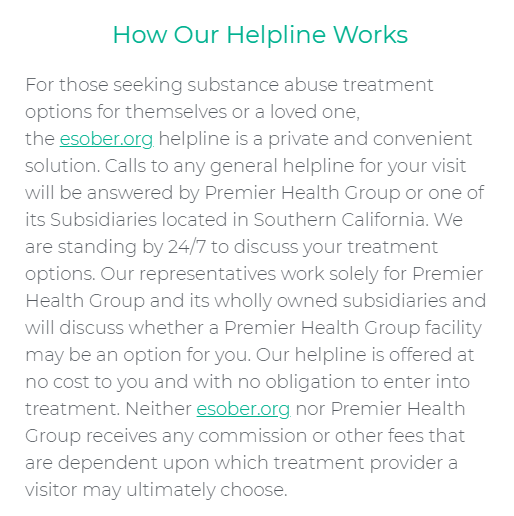Alprazolam, often sold under the brand name Xanax, is a controversial drug. It is one of the United States’ most prescribed medications, with more than 17 million prescriptions in 2019. It’s a powerful short-acting tranquilizer belonging to the benzodiazepine drug class and has a calming effect on the brain and nerves.
Xanax has been around since the 1970s and was approved for medical use in the US in 1981. It is most commonly used to treat anxiety disorders, but it has recently become prevalent in recreational drug use. Its effects are strong and fast-acting, and it has a high potential for abuse with long-term use. In this article, we will explore the essentials of alprazolam and its addictiveness.
Is Xanax Addictive?
Xanax use can lead to tolerance, dependence, and addiction. It’s a controversial drug among the medical community, with some physicians arguing that its risks for misuse are low and comparable to other benzodiazepine drugs. It is a Schedule IV controlled substance, which means it has a low potential for abuse. However, thousands of Americans seek treatment for alprazolam dependency and addiction to this drug.
Tolerance to the drug develops quickly, and users can be dependent on the drug in a matter of weeks, which means the user will likely have to take more than the usual amount to feel its effects.
Physical dependence on the substance can also occur after long-term treatment. This means that if they discontinue its use, they will experience withdrawal symptoms, including restlessness, rapid heartbeats, anxiety, tremors, and insomnia. To counteract these effects, the user will take more of the drug, ultimately fuelling a vicious cycle of addiction.
Why Is Xanax So Addictive?
In 2019, Xanax ranked 41st among the top 300 most commonly prescribed drugs in the US. Most people who use this drug are trying to treat anxiety and do not seek the drug recreationally, but physical dependence to the drug can happen even when used medicinally.
As part of the benzodiazepine family of drugs, Xanax binds to the receptors of the chemical messenger GABA (gamma-aminobutyric acid). Then, it modulates the receptors to produce its calming effects. After prolonged use, your nerves adapt to the substance’s presence.
As your body gets used to the drug’s presence, its effects begin to decline. Your nerves will become less sensitive and will seek more of the substance to feel a difference. It’s likely that your anxiety symptoms will return until you increase your dose. When this happens, you may already be on your way to addiction.
What Are the Medical Uses of Xanax?
As mentioned above, Xanax is a fast-acting drug with tranquilizing or calming effects on the central nervous system. It’s usually taken orally in small tablets or bars, and it’s often prescribed as a short-term treatment for several anxiety disorders and nausea due to chemotherapy. Physicians have to assess the effectiveness of the drug on the patient regularly due to concerns regarding tolerance.
Use in Anxiety and Panic Disorders
Xanax has benefits for patients with some anxiety disorders, although its benefits only last for four months. The drug is FDA-approved for the treatment of generalized anxiety disorder (GAD) and short-term relief for anxiety symptoms. Although some doctors prescribe it for depression, its antidepressant effects remain poor.
Alprazolam provides short-term relief for moderate to severe panic attacks in panic disorder, but other drugs called selective serotonin reuptake inhibitors (SSRIs) are usually the first line of treatment against this mental illness. Its benefits for panic disorder typically only last for four to ten weeks, but some patients have experienced up to eight months of effective treatment.

The World Federation of Societies of Biological Psychiatry (WFSBP) recommends this FDA-approved drug to remedy treatment-resistant panic disorder, given that the patient does not have a history of tolerance or dependence.
Use in Chemotherapy-Induced Nausea
Patients undergoing chemotherapy often experience nausea and vomiting. Doctors may prescribe alprazolam with other medications to mitigate these side effects.
What Are the Side Effects of Xanax?
Xanax has many side effects, including drowsiness, a change in sex drive, lightheadedness, dizziness, and an increase in saliva production. Many people who use the drug do not experience severe side effects because doctors usually assess the benefits and risks of the drug for treatment.
In rare cases, patients may experience intense mood changes, hallucinations, suicidal ideation, loss of coordination, memory problems, seizures, trouble speaking, and jaundice. It’s best to contact your physician if any of these adverse effects occur.
Precautions for Using Xanax
Some patients have severe allergic reactions to the drug or its inactive ingredients. It’s always best to tell your doctor about any allergies you may have, especially to benzodiazepines, such as lorazepam and diazepam. Seek immediate medical attention if you experience rashes, itching, swelling, and trouble breathing.
It’s also advisable to tell your doctor and pharmacist about your medical history, as the drug can have adverse effects on patients with liver disease, lung or breathing problems, kidney disease, glaucoma, and a personal or family history of a substance use disorder.
Because Xanax makes people feel dizzy and drowsy, it’s not advisable to operate heavy machinery, drive cars, or do other activities that require concentration and mental alertness until the effects have worn off. Alcohol and cannabis may also increase the sedative effects of the drug, so it’s crucial to avoid them while using the substance.
Some drugs have adverse effects when you take them together with Xanax, so it’s crucial to notify your doctor about all the medications you use, which include prescription and non-prescription meds and herbal products.
Pregnant women should only use this medication when absolutely necessary because it can harm the unborn baby. It’s also worth noting that the drug passes into breast milk and may affect the nursing infant, so always consult your doctor before use.
What Are the Signs of Xanax Addiction and Abuse?
Xanax addiction, like many forms of substance abuse disorder, can severely impact a person’s everyday life. Although the path to addiction may seem like a slow burn and is barely noticeable, there are physical and psychological warning signs that one should look out for. Some indications include slurred speech, mood swings, confusion, poor concentration, and withdrawal symptoms.
A person with Xanax addiction may also develop unusual behaviors, such as actively seeking out the drug without a prescription, doctor shopping, taking more than what’s prescribed, withdrawing from social activities, lying, being secretive, stealing, and lashing out.
What Happens If You Take Too Much Xanax?
Aside from addiction being detrimental to a person’s general well-being and daily functioning, severe tolerance and dependence on the drug may eventually lead to the person taking more than what their body can take. Altered mental states, slurred speech, and severely impaired coordination and reflexes are often signs that a person took too much of the drug. In extreme cases, the individual may enter a coma or even die.
Get Help with Your Xanax Addiction
Xanax is one of the most commonly prescribed drugs in the US. Although it can be an effective short-term treatment for anxiety disorders and chemotherapy-induced nausea, it still has the potential for abuse. People who take it for too long can develop an addiction to the substance, which can be debilitating and dangerous.
Sources:




